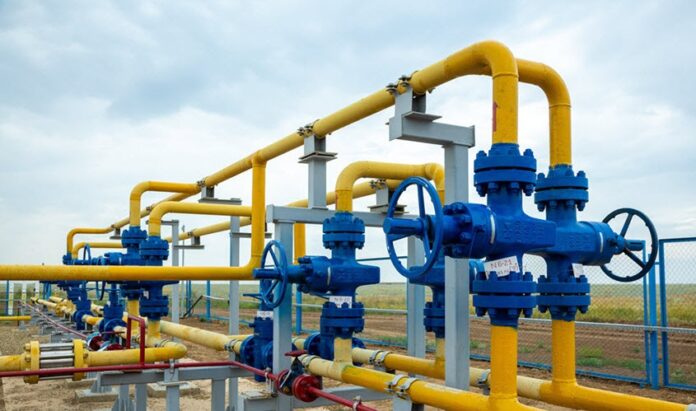Introduction: Why the UK Natural Gas Price Is Everyone’s Business
When most of us think about gas, we imagine heating our homes or powering our businesses. Rarely do we stop to consider the intricate web behind the pricing. Yet, understanding the UK natural gas price isn’t just for economists or energy analysts—it’s vital for everyday consumers and companies alike.
Whether you’re managing a household or balancing a business budget, rising gas costs affect you. The more we understand what drives these changes, the better we can prepare, adapt, and even cut costs where possible. So, let’s take a deep dive into what shapes the UK natural gas price and why it’s more relevant than ever.
The Basics—What Determines the UK Natural Gas Price?
The UK natural gas price is influenced by several interwoven factors. Supply and demand, global market trends, weather conditions, and even geopolitical unrest all play a role. Unlike fixed utility prices, gas prices in the UK are largely market-driven, fluctuating on a daily basis depending on broader conditions.
Additionally, the UK’s increasing reliance on gas imports—from Norway, Qatar, and the US—means global events can trigger immediate price spikes. Disruptions in pipelines, LNG shipping routes, or even economic sanctions can ripple across the UK energy market.
From the Ground Up—How Gas Moves from Source to Socket
It’s easy to forget the journey gas takes before reaching your home or office. It begins with extraction, whether from North Sea reserves or international LNG terminals. From there, it’s stored, transported, and finally delivered through a complex distribution network.
At each stage, costs are incurred—storage fees, distribution tariffs, maintenance, and more. All these feed into the final UK natural gas price, which is passed down to the end user. The more turbulent this journey becomes, the more volatile your gas bill can be.
Weathering the Storm—How Seasons Shape Prices
Winter Demand Surges
As temperatures drop, demand for gas surges—especially for heating. During harsh winters, this increased demand can outstrip supply, pushing the UK natural gas price higher.
Summer Isn’t Always a Break
You might assume summer brings price relief, but that’s not always true. Maintenance work on gas fields or LNG terminals often occurs during summer, which can temporarily reduce supply and cause short-term spikes in pricing.
Being aware of these seasonal trends helps consumers and businesses plan ahead and potentially lock in better deals.
The Global Stage—Why International Events Matter
From conflicts in Eastern Europe to economic downturns in Asia, international events have a direct impact on the UK natural gas price. For instance, the Russia-Ukraine conflict significantly disrupted European gas supplies, sending shockwaves across global energy markets.
Since the UK imports much of its gas, any disruption to global supply chains—even if it happens thousands of miles away—can hit home in the form of higher bills. This interconnectedness makes energy planning more challenging, but also more critical.
Domestic Policies and Their Influence
The UK government plays a significant role in managing energy affordability and security. Policy shifts, subsidies, carbon levies, and storage initiatives all impact the final price consumers see.
For example, renewable energy incentives or carbon pricing mechanisms may not directly relate to gas, but they do shape the broader energy landscape. When renewables underperform, reliance on gas increases—raising the UK natural gas price.
Business vs. Residential—Who Pays More?
Businesses often face steeper prices than households, especially if they operate during peak hours or require large volumes of energy. Commercial contracts are typically negotiated separately, sometimes with flexible tariffs that change with market fluctuations.
That said, residential consumers are not immune. A volatile natural gas price filters down through regulated tariffs, affecting heating, cooking, and electricity costs in every home.
Smart Ways to Navigate Rising Gas Prices
No one can control global energy markets, but we can all take steps to reduce our reliance and costs. Here’s how:
-
Energy Efficiency: Upgrade insulation, install smart thermostats, and service boilers regularly.
-
Fixed Tariff Contracts: For both homes and businesses, locking in rates when prices are low can offer stability.
-
Diversification: Explore renewable energy options like solar panels or heat pumps to reduce gas dependency.
These proactive steps can help buffer the impact of volatile UK natural gas price swings, offering both peace of mind and potential savings.
Looking Ahead—What’s the Future of UK Gas?
The UK is committed to reaching net zero carbon emissions by 2050, which means gradually phasing out natural gas in favor of greener alternatives. Yet, for now, gas remains a cornerstone of the energy system.
Innovations like hydrogen blending, battery storage, and offshore wind are promising but still developing. Until then, keeping an eye on the UK natural gas price and making conscious energy decisions will be key for both financial and environmental sustainability.
Conclusion: Gas Prices May Rise, But So Can Awareness
In an unpredictable world, understanding how and why the UK natural gas price changes gives you more than just knowledge—it gives you power. Whether you’re managing a household budget or running a business, knowing the trends, the triggers, and the tips can help you stay ahead of the curve.





